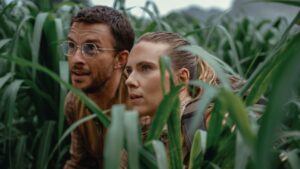
Some of the most captivating science fiction narratives are inspired by real-life phenomena that are equally eerie and fascinating. A recent discovery has brought to light an ancient example of such phenomena: a parasitic fungus that commandeered the body of a fly, preserved in 99 million-year-old amber. This remarkable find offers a glimpse into the prehistoric world, where mind-controlling parasites thrived alongside dinosaurs.
The discovery, made by researchers from the Nanjing Institute of Geology and Palaeontology, Chinese Academy of Sciences, reveals one of the oldest instances of a fungal parasite hijacking an insect’s body. The preserved specimen, alongside an infected ant pupa, underscores the complexity of ancient ecosystems where parasitic fungi preyed on insects. According to Yuhui Zhuang, a doctoral student at the Institute of Paleontology at Yunnan University in Kunming, China, these findings could help scientists trace the evolutionary lineage of today’s parasitic fungi.
The Science Behind the Fungus
In modern times, the Ophiocordyceps fungus is known for its ability to infect and manipulate the behavior of ants, turning them into “zombies” that serve the fungus’s reproductive needs. This parasitic relationship inspired the creators of “The Last of Us,” a popular video game and HBO series, to imagine a world where such fungi could infect humans. While the storyline is fictional, the real-life behavior of these fungi is no less intriguing.
The amber-encased specimens provide a rare opportunity to study the evolutionary history of parasitic fungi. By examining these ancient samples, scientists hope to understand whether these fungi are the ancestors of the ones that currently affect insects like carpenter ants. This research could offer insights into the resilience and adaptability of parasitic organisms over millions of years.
Defying Gravity: A Space Station Update
In other scientific news, the Axiom Space Mission 4 launched to the International Space Station after a delay caused by a persistent air leak. This leak, originating from tiny cracks in a tunnel connecting Russia’s Zvezda module to a docking port, had been a concern since 2019. Although the leak recently stopped, it raised alarms about the station’s overall integrity.
Meanwhile, a joint mission by the European Space Agency and NASA has captured unprecedented footage of the sun’s south pole. The Solar Orbiter spacecraft’s observations could enhance our understanding of space weather and its effects on Earth.
Exploring the Universe and Ocean Depths
The Vera C. Rubin Observatory has released its first cosmic images, showcasing over 2,000 newly detected asteroids and millions of distant galaxies and stars. These initial test observations, taken with the largest camera ever built, promise a decade of groundbreaking astronomical discoveries.
On Earth, drone footage has revealed a unique behavior among orcas in the Salish Sea. These marine mammals were observed using strands of bull kelp as grooming tools, a practice dubbed “allokelping.” This behavior, never before seen in marine mammals, may serve both hygienic and social bonding purposes.
Fascinating Discoveries Around the World
Recent discoveries continue to amaze scientists and the public alike. In Australia, “super coral” species that are naturally resilient to environmental changes may hold the key to saving the Great Barrier Reef. In the Netherlands, routine river dredging uncovered a nearly 1,000-year-old sword adorned with spiritual symbols. Meanwhile, fossils found in Colorado belong to a previously unknown dinosaur species, and researchers in Quebec have identified Earth’s oldest rocks, offering insights into our planet’s early history.
These discoveries highlight the endless wonders of our world, both past and present. For those eager to stay informed about such fascinating stories, CNN’s Wonder Theory science newsletter offers a regular dose of awe-inspiring news from the realms of space and ancient history.





